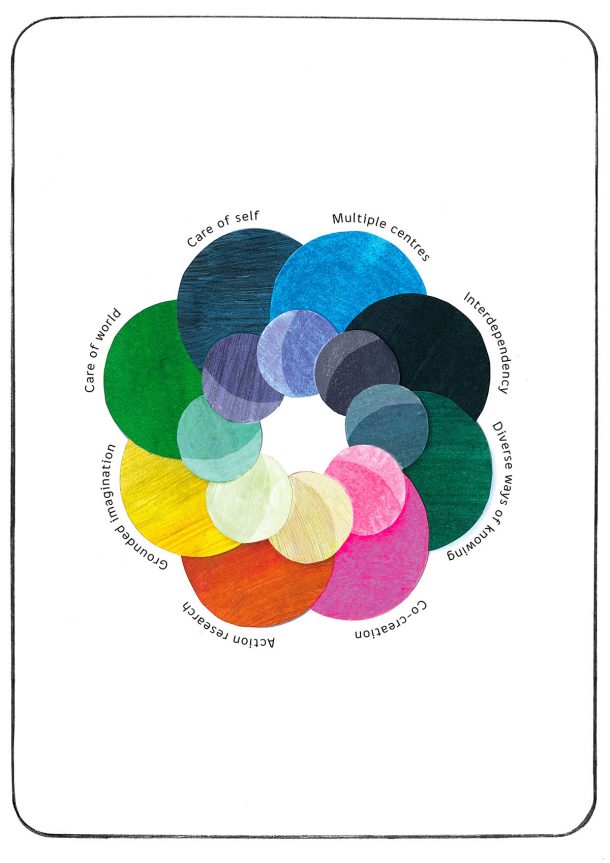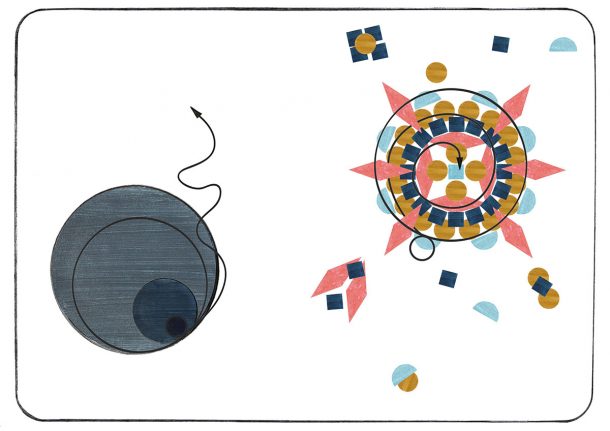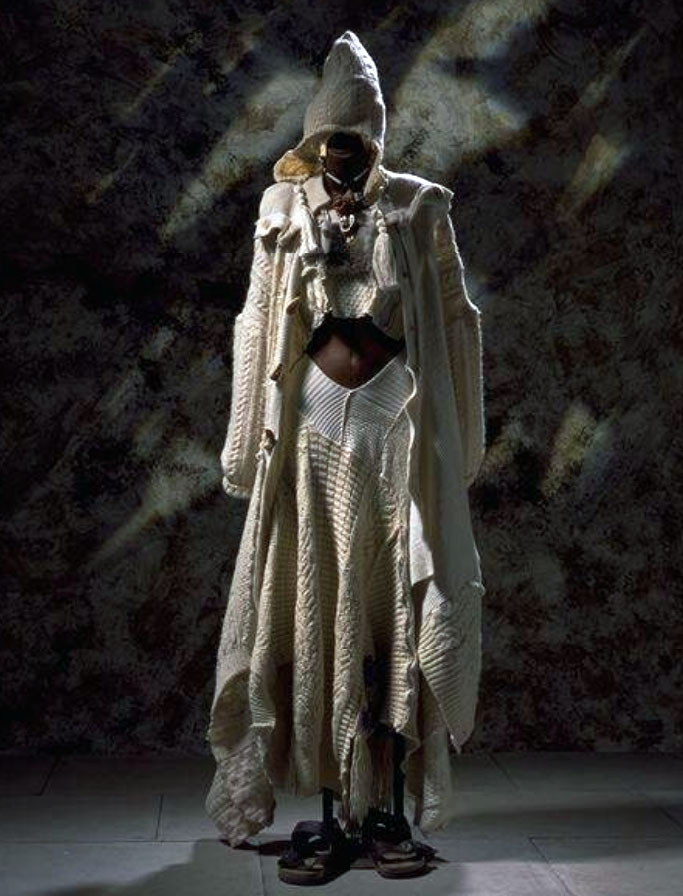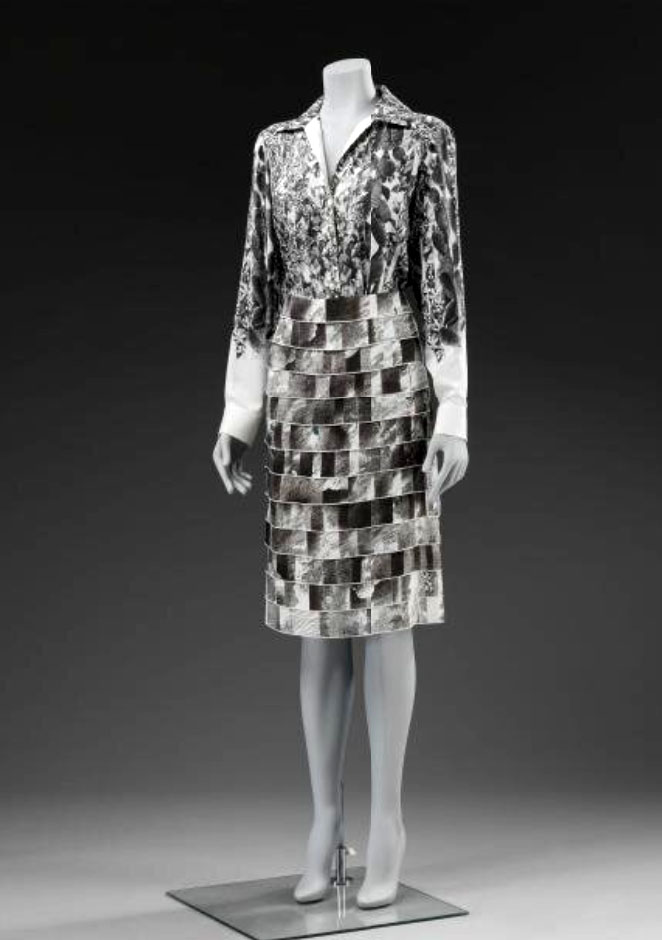The V&A Anthropocene Reading Group is a cross-departmental staff discussion forum dedicated to critical thinking around the Anthropocene – our present age in which human activity has become the dominant force shaping the climate and ecosystems of planet Earth. We are focused on the importance of bringing together the arts, sciences, social sciences and humanities in this time of climate and biodiversity crisis, exploring how the concepts and theoretical frameworks of the Anthropocene relate to museum practice at the V&A. In 2021 we are turning our attention to systems change, and engaging with critical and propositional practice that is shifting the landscape of debate and action in response to the realities of the Anthropocene – from economics to fashion, architecture, design and making.
Our second session of 2021 explored sustainable fashion, building on the momentum of Fashion Revolution Week 2021 – a forum devoted to social and environmental justice in the fashion sector. We were joined by two guest speakers, Kate Fletcher, Research Professor of Sustainability, Design, Fashion at the Centre for Sustainable Fashion, University of the Arts London, design activist and author, and Edwina Ehrman, Honorary Senior Research Fellow at the V&A Research Institute (VARI) and curator of the V&A exhibition Fashioned from Nature (2018 – 2019). In tune with our reading group’s focus on ‘rethinking systems’, our session explored fashion systems and the values that govern them. Our relationship with nature emerged as an important theme, together with reflections on what our actions and expectations towards the natural world say about us. A thought-provoking session, the discussion explored several concepts and strategies for driving change.
The challenge and urgency of fashion system change
Our speakers Kate and Edwina kicked off discussions by exploring the current debates around sustainable fashion, reflecting on how the industry has evolved over the past 30 years. Their analysis shed light on the challenge of delivering meaningful transformation in a fashion system dominated by a drive towards economic growth. Drawing on the writings of Alice Payne, Edwina considered how much of sustainable fashion practice still revolves around ‘taming’ – actions such as materials substitutions and efficiency drives that seek to mitigate the environmental costs of fashion, but still operate within the dominant system. Kate highlighted that such strategies of ‘ecological modernisation’ often become new drivers of growth logic and fail to address the fundamentals of the problematic, human-centric values that govern the industry, noting that ‘“green” products in a conventional system do little to change behaviour’.
We can waste no time in acting with new imagination and responsibility about our relationships with the Earth – and this means acting in a new partnership with nature and also taking on the systems and paradigmatic questions that are the keys to unlock the future.
Kate Fletcher
Earth Logic as a new model
Kate Fletcher shared a series of provocations around what fashion and nature can be. Advocating for a radical shift in thinking from products to practice, from materials to systems, she called for ‘Earth Logic’ – a new model of putting the planet before industry. This approach echoes the call for ‘a great transition’ at systems level put forward by the creators of the internationally recognised ‘planetary boundaries model’, who have argued that sustainable development must be underpinned by fundamental institutional changes in financial systems, materials use and world trade, moving away from notions of infinite growth, to instead work within Earth system limits. At the heart of ‘Earth Logic’ is a vision for a new partnership with the natural world, where ‘nature’ is not positioned as a dead resource. Instead, ‘Earth Logic’ posits a broader idea of care in the age of the Anthropocene, where human activity acts with, for, and within nature.
Such principles of care demand new forms of learning and new ways of working. The Earth Logic Fashion Action Research Plan is a starting point for practice to drive such change. It offers a set of methodologies for research that can foster action, bring together multiple stakeholders from diverse disciplines and inspire new forms of collaboration. It is a model to underpin fashion activity across all levels, from research and product design strategies to business models and cultural mindsets. The plan’s inspiring set of ‘Earth Logic Values’ and ‘Landscapes for Fashion Action’ resonated with the group. The diagram below captures the framework of eight interconnected ‘Values’ that can guide sustainability initiatives – from the importance of ‘multiple centres’ of knowledge to a commitment to ‘grounded imagination’ that remains attuned to the tough realities of biodiversity loss and irreversible climate change. Collectively, these values can promote a balance of perpsectives when exploring ‘Earth Logic’ fashion agendas.

The six ‘Landscapes for Action’ offer starting points for rethinking the fashion industry, shifting its focus from growth of goods to care and mainentance. The plan champions the transformative potential of local fashion centres, co-creation and new approaches to fashion storytelling. The provocative first landscape of ‘less’ – illustrated in the diagram below – resonated with the group. It calls for moving fashion activity beyond the goal of growth, and asks the question of how less consumption and down-sizing might lead to a broadening of fashion experiences – making space for new forms of storytelling with existing clothing, along with new stories of creative reuse and repair.

The power of personal storytelling
Reflecting on her biographical writing project Wild Dress, Kate highlighted the power and potential of direct experience as a form of environmental action. Kate encouraged the group to think about new forms of fashion storytelling that can sit outside of traditional narratives of style and material extraction, and instead bring a new focus to human embeddedness in nature. Clothes are after all, a powerful medium through which we experience the world around us. They can be a starting point for new forms of timely research activity, tuned to present day concerns of climate emergency.
Thoughts for collecting strategy in museums
Edwina shared reflections on the responsibilities of museum curators in the context ‘Earth Logic’ thinking. Environmental practice has been a strategic focus for collecting at the V&A for a few decades, with notable early case studies including acquisitions from two V&A exhibitions in the 1990s – Surfers, Soulies, Skinheads and Skaters: Subcultural Style from the Forties to the Nineties (1993) and Green Images: Posters and Printed Ephemera (1998).



Decades on, collecting sustainable design and fashion continues. Our discussion reflected on the impact of such collecting efforts against the bigger picture of long-term commitments to sustainability, and the scale of societal challenge we face. Questions around new forms of storytelling were raised in the context of thinking about how to shed light on the bigger systems that shape fashion production – beyond the garment artefact, what documentation and evidence might museums need to collect? How might we broaden how we narrate fashion experiences to explore human embeddedness in nature? Being thoughtful about our working definitions of ‘sustainable design’ remains important too, thinking beyond industry tactics of ‘taming’ to more radical forms of ecologically-minded practice, both historic and contemporary, alongside mindful strategies for collection growth.
CURATORIAL TACTICS
The group considered the range of opportunities for museum research, programming and digital initiatives to progress debates around sustainable fashion, building on the momentum of the V&A’s new sustainability strategy and new ‘family’ of museum sites. Faced with the pressing timescale for achieving net zero targets, the group considered agile, responsive projects as vital – as Edwina put it, the time is now for endeavours ‘with urgency, an action, that can draw in voices from around the globe, so we can collaborate and reflect those values we find in Earth Logic’.
The Anthropocene Reading Group is cross-departmental effort, convened by V&A East, VARI and the Estate department. It is co-chaired by Marta Ajmar, Sara Kassam and Zofia Trafas White.
Further Reading
Kate Fletcher, Wild Dress: Clothing and the Natural World (Uniform Books: Axminster, 2019)


